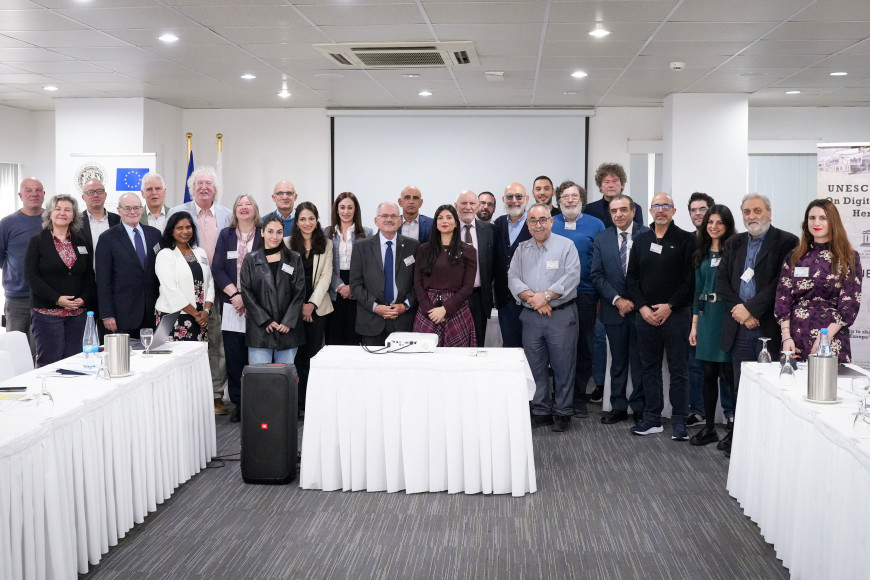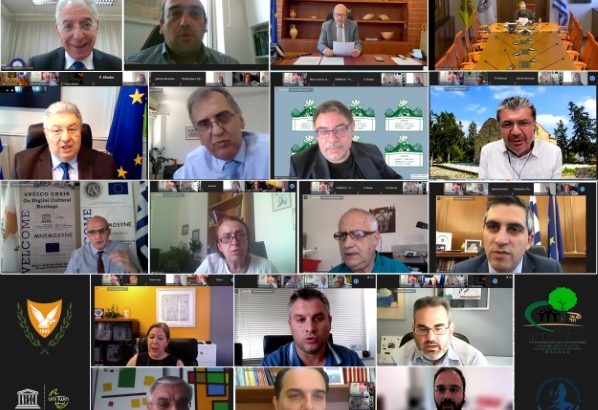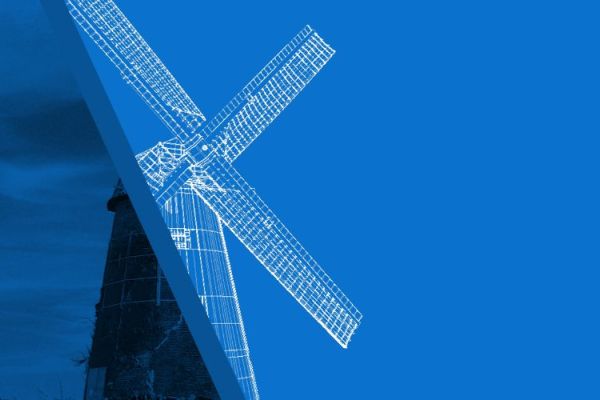Top notch scientists, stakeholders and policy makers from various countries gathered in the Mediterranean island country of Cyprus earlier this month to attend the much anticipated H2020 ERA Chair MNEMOSYNE final event.
Last week, top-notch scientists, stakeholders, and policymakers from various countries convened in the Mediterranean island country of Cyprus for the highly anticipated H2020 ERA Chair MNEMOSYNE final event.
The presence of eminent experts from diverse nations at the two-day event in Limassol comes as no surprise. The EU-funded initiatives conducted at the UNESCO and ERA Chairs of the Digital Heritage Lab (DHRLab) at the Cyprus University of Technology (CUT) mark a significant breakthrough in the realm of digital cultural heritage documentation.
Let’s delve into what the international experts shared during the final event
Professor Tokmakidis from Greece
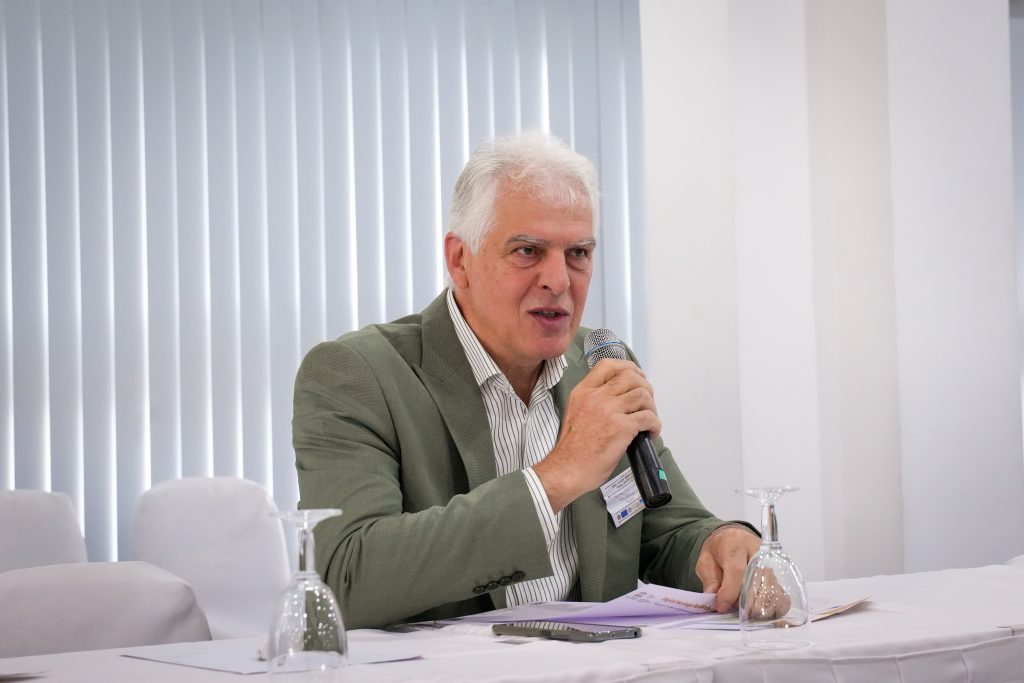
Professor Konstantinos Tokmakidis from the School of Rural and Surveying Engineering at the Aristotle University of Thessaloniki has been working for many years on documenting ancient and mediaeval monuments.
“This event boasted a high scientific caliber, offering me the opportunity to gain knowledge beyond my previous understanding. Not only did I acquire new insights about Cyprus, but I also discovered intriguing information about artifacts from my own geographic area, specifically Northern Greece.
Regarding MNEMOSYNE, I possess a comprehensive understanding of this project as I am one of the external reviewers. What makes MNEMOSYNE exceptional is its potential to serve as an invaluable resource for various cultural heritage endeavors. Significant strides have been made in acquiring key knowledge for documenting cultural heritage through the work accomplished here.
The utilization of modern technology for the preservation and comprehensive documentation of cultural heritage is paramount in today’s world, especially considering the persisting occurrences of wars and natural disasters. For instance, in the Yugoslav Wars, numerous monasteries faced complete destruction, leaving us incapable of restoring these significant cultural treasures. Their loss is irreversible. Had we employed the methodologies akin to those used in the MNEMOSYNE project back then, these invaluable cultural assets might have been safeguarded. This highlights the urgency and importance of employing such methodologies moving forward”.
Professor Liestel from Oslo, Norway
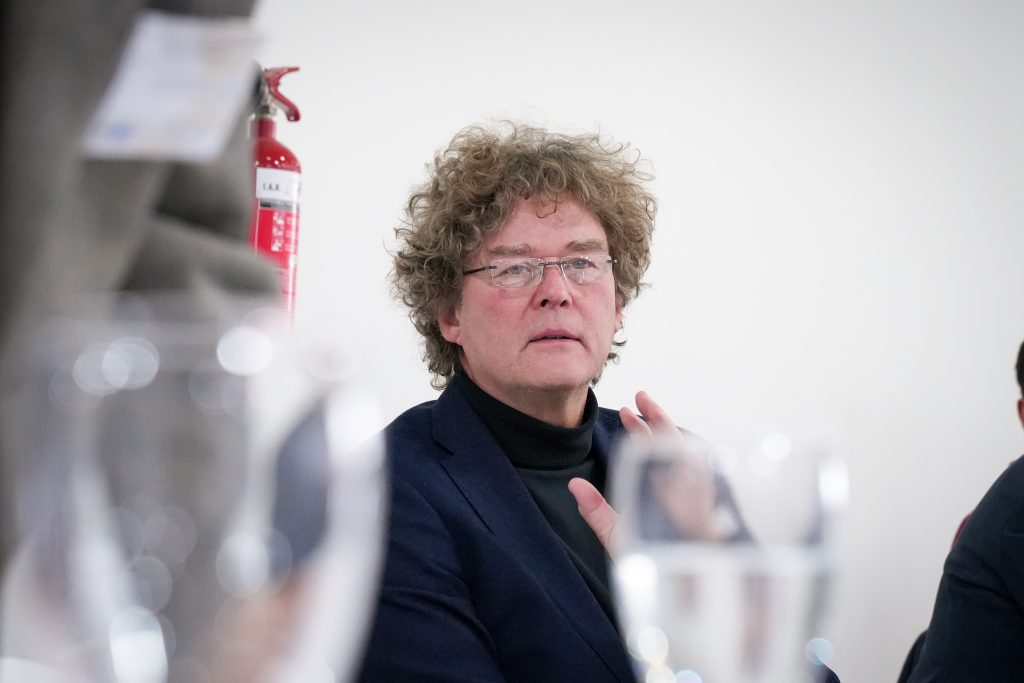
An expert on Augmented Reality, Professor Gunnar Liestoel from Norway has been following the MNEMOSYNE project since its very beginning. He is involved in some of the evaluations from his own field of research.
“Since 2007, I have been immersed in working with location-based media within the realm of cultural heritage. My perspective on technology stems more from a humanities standpoint rather than a technical one. My primary focus lies not primarily in the documentation process. I operate on the side that involves disseminating and communicating information to users and visitors. While it might seem slightly divergent, comprehending this aspect is immensely significant to me, which is why I am here”.
Dr Nabil S. Itani from Lebanon
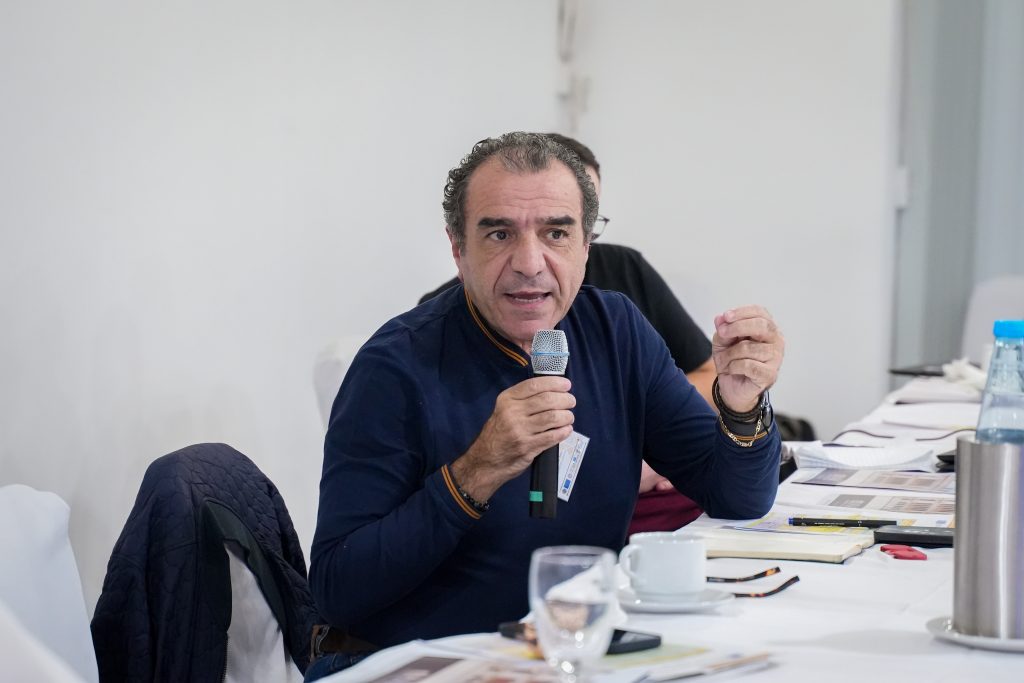
Dr Nabil S. Itani is a Lebanese architect with a specialisation in conservation of old cities and old monuments. At some point during the past he worked with the World Bank on the mediaeval walled city of Famagusta in Cyprus. Nowadays Dr Nabil Itani is representing ICOMOS Lebanon.
“The digitization of cultural heritage holds immense importance, especially in safeguarding rights. In Lebanon, enduring multiple decades of conflicts and ongoing crises, a substantial portion of our cultural artifacts have been unlawfully taken abroad. However, through recent efforts, we successfully repatriated 12 unique pieces because they had been digitally recorded. Although it was a lengthy process, Lebanon rightfully reclaimed these items. The utilization of digitization and advanced technologies made this retrieval possible.
Our initial engagement with the MNEMOSYNE project occurred two years ago through ICOMOS Lebanon. We eagerly attended this event to witness firsthand the remarkable work being undertaken here. Undoubtedly, this initiative significantly benefits anyone invested in preserving cultural heritage. It’s an issue of utmost importance that concerns humanity as a whole.”
Professor Manos Roumeliotis from Greece
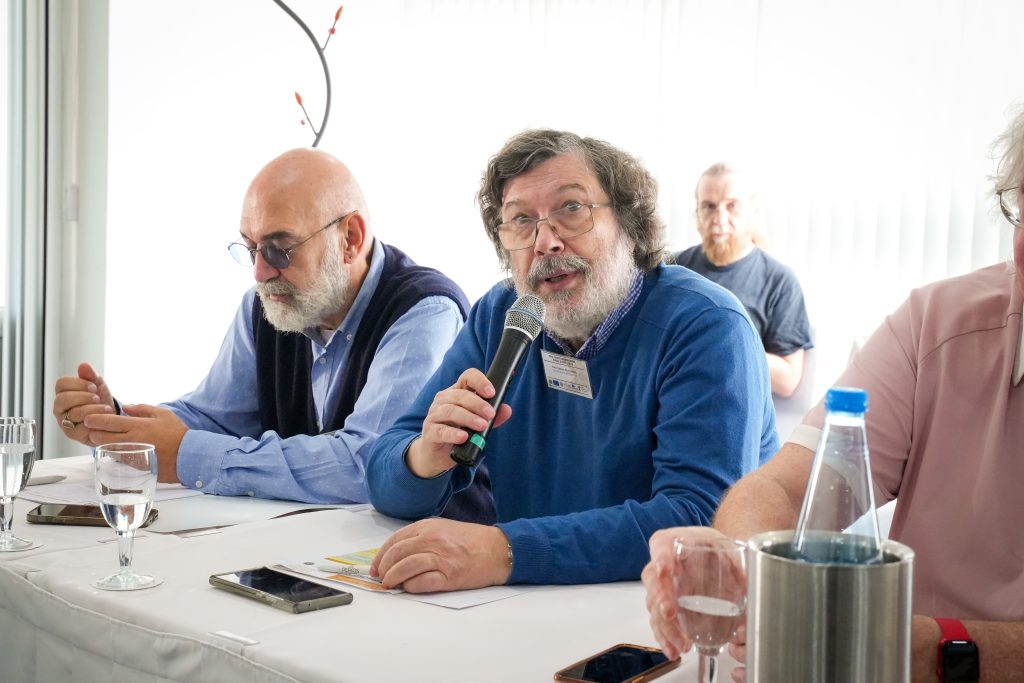
Professor Roumeliotis from the University of Macedonia in Thessaloniki is the person who designed the first simulation of the Antikythera Mechanism. He teaches courses such as Operating Systems, Microprocessors, Microcomputers and Simulation Techniques.
“I have a profound interest in safeguarding cultural heritage, which prompted my enthusiastic involvement as a scientific advisor in the MNEMOSYNE project. Digitization stands as a pivotal process, especially in the realm of disseminating knowledge. Consider the Antikythera Mechanism, a project in which I personally participated. Its widespread recognition largely stemmed from simulations I conducted back in 1998. This endeavor significantly contributed to the Mechanism’s exposure, as it became more widely known during that time. In essence, digitization not only aids in the preservation of monuments and artifacts but also plays a crucial role in enhancing their popularity.”
Dr George Kakavas from Greece
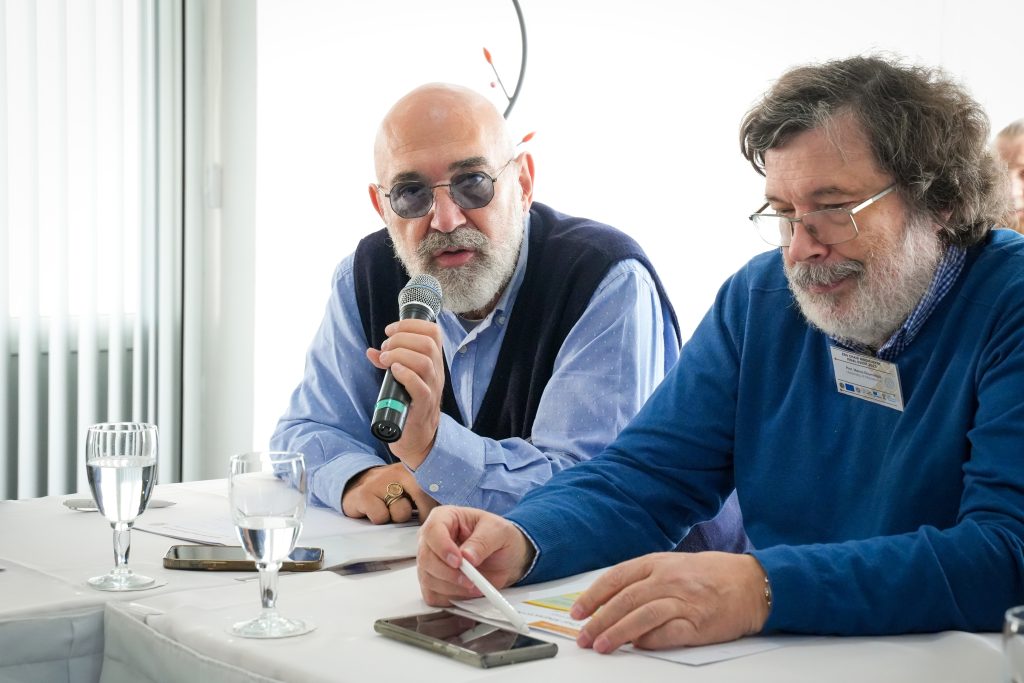
Dr. George Kakavas is the Director of the National Numismatic Museum in Greece.
“For the past four years, I’ve been actively engaged with DHRLab in pioneering projects, such as the simultaneous digitization of coins sourced from the collections of the National Numismatic Museum in Greece and the Bank of Cyprus Cultural Foundation. One particularly captivating outcome was the development of a game that allows users to interact with and manipulate digitized coins using specialized lenses.
I firmly believe that fostering collaborations like this one, especially through EU-funded projects, holds immense value. Such collaborations offer a unique opportunity not only to gain insights into the work conducted by partner institutions but also to effectively represent one’s own organization. In my case, this entails representing the globally unique National Numismatic Museum in Greece.
Dr Janet Anderson and Dr David Anderson from Ireland
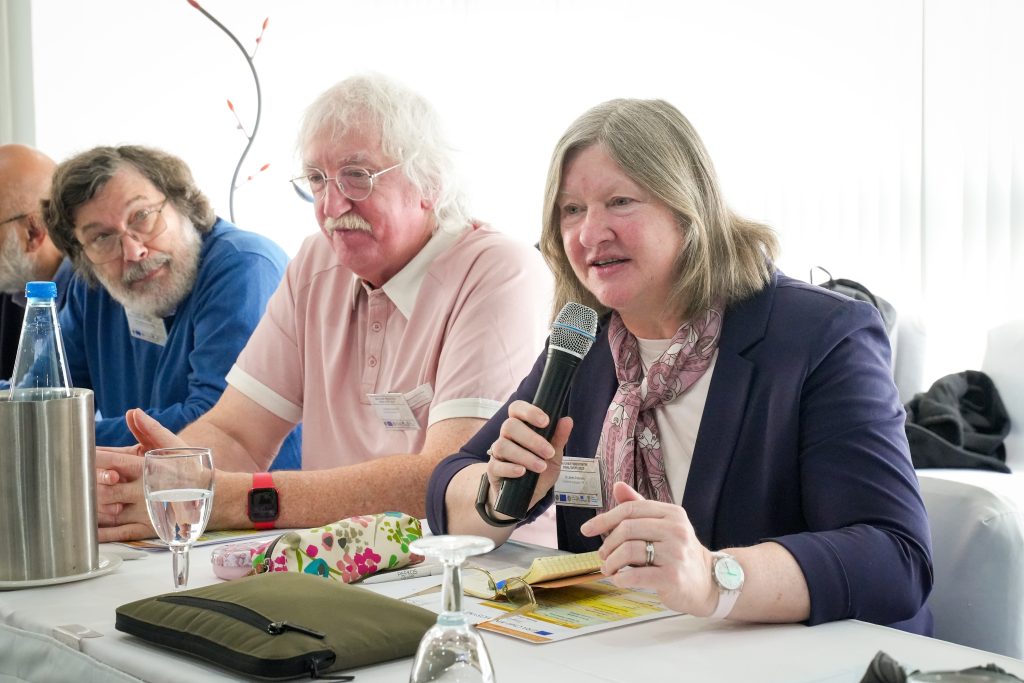
The final event was also attended by Dr Janet Anderson of Highbury Research & Development, Ireland, previously Professor of Digital Humanities at the University of Brighton, UK and currently Project Manager of the European Commission’s eArchiving Initiative as well as Dr David Anderson of Highbury Research & Development, Ireland, previously Professor of Digital Humanities at the University of Portsmouth and Chief Financial Officer of the European Commission’s eArchiving Initiative.
Dr Janet Anderson: “This event was exceptionally significant and well-timed, given our mandate to focus on eArchiving within the digital cultural heritage community, particularly in the realm of 3D archiving. The MNEMOSYNE final event provided a platform for collaboration with experts, facilitating extensive discussions on various critical issues related to digital archiving and taxonomy. These discussions allowed us to delve deeply into these topics and chart a clear path forward. Moreover, signing the Memorandum of Understanding was a pivotal moment for us, marking a crucial step in our journey.”
Dr David Anderson

Dr David Anderson
“I find the work conducted here to be immensely significant. To be honest, I was pleasantly surprised by the level of maturity in the work, especially considering our mandate to engage with this community. I had anticipated a lower starting point, but the advancements made are noteworthy and we are enthusiastic about fostering a highly productive collaboration.
While I may not be an expert in digitization, I firmly believe in the unquestionable importance of preserving cultural heritage. It becomes evident when we witness ongoing events not far from our current location and further east, where the cultural heritage of certain nations is systematically destroyed. Amidst these tragic human and physical disasters, establishing digital preservation measures becomes exceedingly crucial. It serves as a means to safeguard the heritage of communities and people.”
Ms Catharine Dass from the United Kingdom
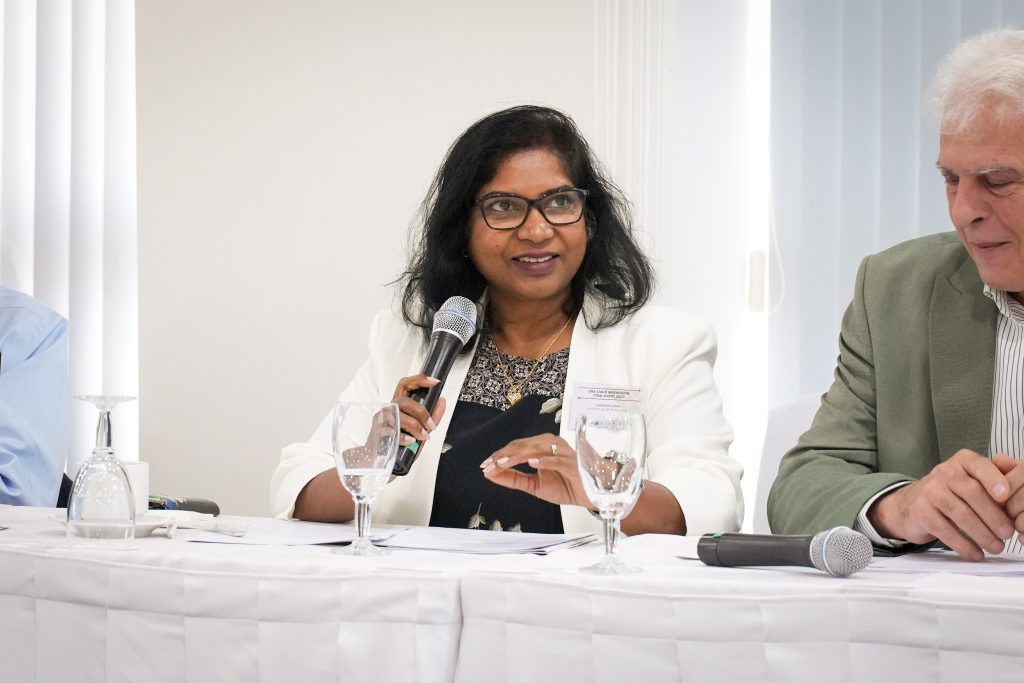
Ms Catharine Dass from the UK is a TechWomen100 Award Winner and Architect at UK Parliament. She specifically works in the architecture and conservation team of the historic building.
“I find this event absolutely brilliant; it’s been a wellspring of fresh inspiration and ideas for me. The team appears highly knowledgeable, and I’ve endeavored to contribute my own insights. Frankly, I haven’t encountered many practical examples thus far. Being someone who thrives on visual learning and hands-on experiences, I’m here seeking opportunities to witness and engage in practical applications. That’s why I’m here now! As an evaluator of this project, I’ve gained a chance to explore a different perspective on cultural heritage and comprehend the methodologies employed.
I strongly believe we are currently in the midst of the fourth industrial revolution, characterized by the digitalization of virtually everything. Events like this offer us a chance to harness and expand upon the new technologies we employ today. Our cultural heritage has endured for centuries, and I hope it continues for many more to come. Personally, through the use of current technologies, I feel a responsibility to make my small contribution in preserving our heritage in a manner that benefits future generations.”

